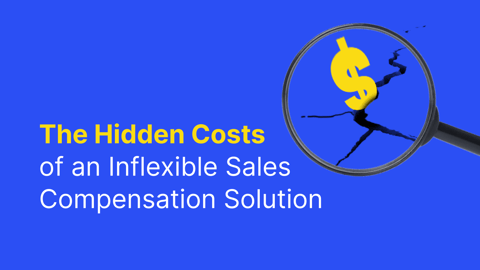This is the third part, in a 3-part series, about managing what’s next with sales activity.
Part 1: How to use Salesforce tasks
Part 2: How to use Salesforce next steps
Part 3: How to use Salesforce meetings (this post!)
Similarly to next steps, using Salesforce meetings will provide two main benefits to your business:
-
Salesforce meetings help sales reps manage deals through the sales process
-
Salesforce meetings provide visibility to sales managers so they can stay up-to-date with where each deal stands
When sales reps are managing their deals effectively through the sales process, they are able to perform the highest value activities each day to move their deals along at a healthy pace. And when sales managers have improved visibility into what is happened with each deal, they are able to spend less time asking questions about each one, and more time providing support and coaching to the ones that need it most.
What is a Salesforce meeting?

A Salesforce meeting is the next established time that you have booked (in the calendar) with the buyer.
In many cases, the next step and the next meeting will be the same thing – so what’s the difference?
The difference between next step and next meeting in Salesforce
Next step: the next thing you and the buyer are going to do
Next meeting: the next thing you and the buyer are going to do and have booked in the calendar
A next meeting is often discussed at the end of your previous meeting. If you’re on a first demo and things are wrapping up, and you establish a next step of meeting for a team-wide demo sometime next week, you would update Salesforce like this:
Next step = Team-wide demo
Next meeting = {empty}
But if at the end of your first demo, and you establish a next step of meeting for a team-wide demo that will take place next Tuesday at 3 PM and you send over a calendar invite while on the call, you would update Salesforce like this:
Next step = Team-wide demo
Next meeting = Team-wide demo
Salesforce meetings are more likely – than tasks or next steps – to be left empty, because it’s hard to get time booked in with buyers. So instead of it being a big red flag whenever a deal doesn’t have a next meeting set, you should consider it as a big green light signaling a healthy deal whenever there is.
For sales managers and leadership, it’s important to track, monitor, and manage next meetings on each deal to see how you can get more green lights in your sales pipeline.
How to manage Salesforce meetings
Having a next meeting agreed to and in the calendar in a leading indicator of a prospects level of engagement because meetings usually mark key checkpoints of your sales process – like a discovery call, team-wide demo, or legal review. The more opportunities in open pipeline that have next meetings set and logged into Salesforce, the better off your sales team will be.
In order to have effective Salesforce meeting management, you should be tracking two things:
-
No next meeting booked
-
Last meeting was more than X-days ago
No next meeting booked
As discussed, not having a next meeting set isn’t as much of a “red flag” as when there isn’t a next task or next step logged in Salesforce, but your goal should be to continue driving each deal towards it’s next meeting.
Even through it isn’t big red flag when there isn’t a meeting set, there are a few instances when alarms should ring. For example, if the next step is “book a team-wide demo” and there is no next meeting set after 30-days, that’s a red flag – either the deal is fizzling out or the sales rep has failed to update the Salesforce meeting.
Last meeting was more than X-days ago (we recommend 30-days)
When there hasn’t been a meeting in recent history, it indicates that the buyer may be prioritizing other initiatives over yours, and therefore putting risk on the deal. Depending on the length of your sales cycle, you can choose to set this at 14, 30, or 60+ days.
By flagging this as an organization, it brings visibility to both sales reps and sales managers. With that, your sales reps are going to be able to manage their own pipeline more effectively, and sales managers are going to be able to step in on deals that need it and say, “What’s going on with this deal? What are some ways we can re-engage and get a next meeting set?”
Moving deals along with Salesforce meetings
Salesforce meetings that are agreed to and in the calendar are a leading indicator of the health of a deal and the likelihood it will be moving forward in the sales process.
By tracking Salesforce meetings, sales reps are able to manage their own pipeline better and sales managers have the visibility needed to step in, ask questions, and provide support where it’s needed most.
To manage Salesforce meetings there are two things to track:
-
If there is no meeting set
-
If the last meeting was more than X-days ago
If as an organization you’re able to minimize those, and continue to get better at them each week, month, and quarter, the results will be in your revenue numbers.
Track, monitor, and manage Salesforce meetings – automatically
Managing Salesforce meetings is easy with Varicent Lift out-of-the-box reporting software.
Bring visibility to deals that don’t have tasks, next steps, or meetings set and automatically detect when a deal has gone more than 14, 30, or 60-days without a meetings so you know it’s time to step in and get creative with your next outreach.
Book a demo to see it for yourself, or try out our new Sales Rep Grader for free to see how your sales reps are managing deals in Salesforce – including how many deals haven’t had a recent meeting or don’t have one set in the future.



